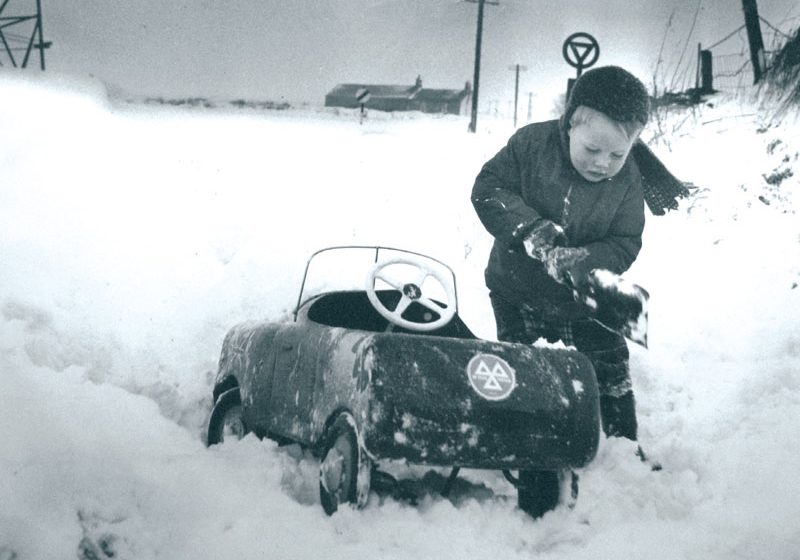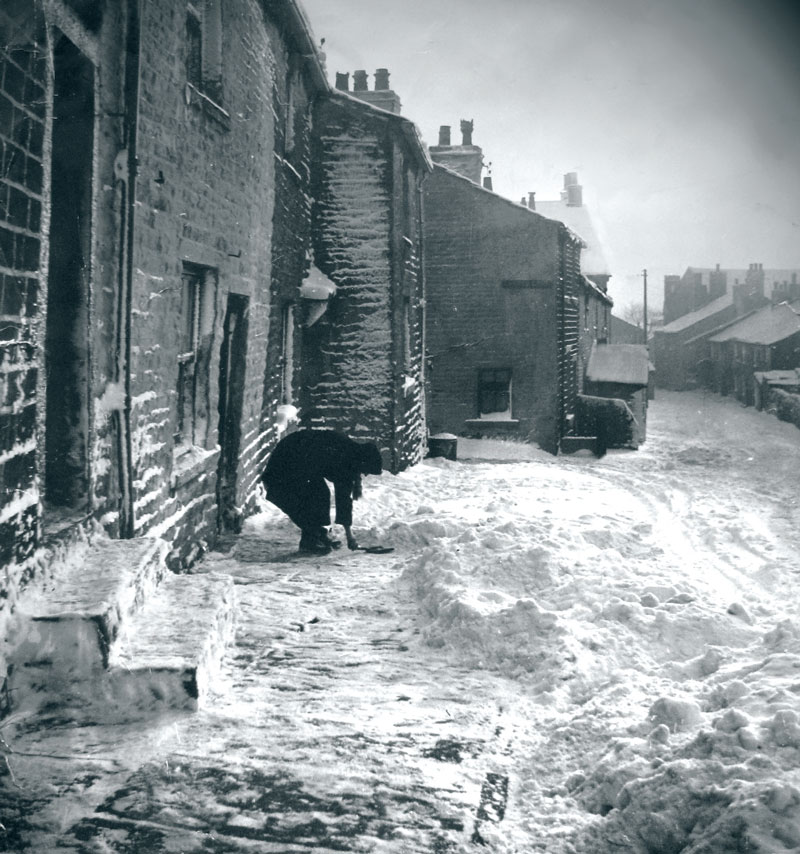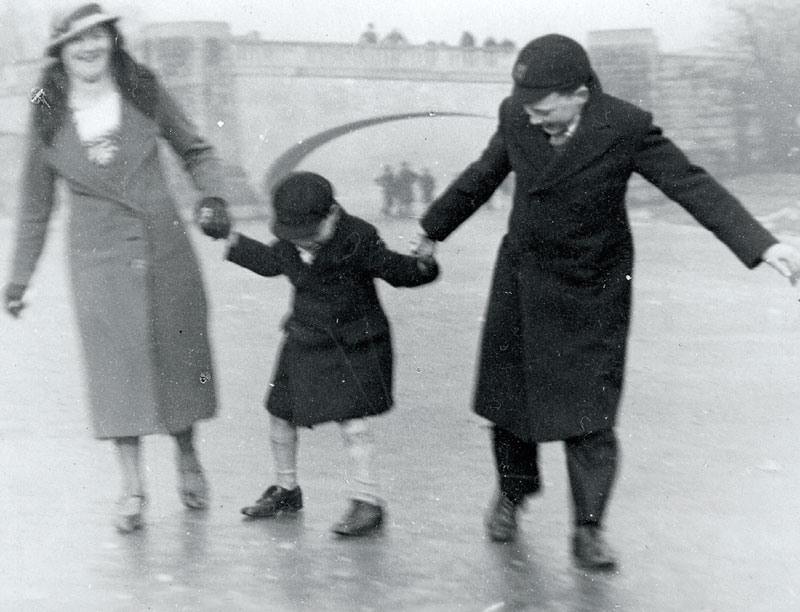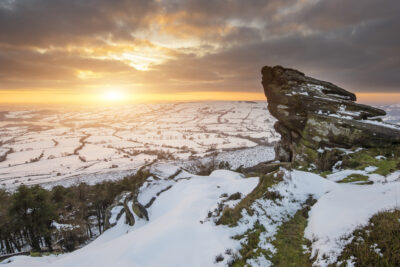
Foggitt and Forecasts
by Eddy Rawlinson
Extracted from issue 35 Dec/Jan 2010
With winter upon us many predictions will be given about the weather conditions we can expect before the arrival of spring in 2011. When it comes to weather forecasting I am reminded of amateur weather forecaster Bill Foggitt and his predictions of what to expect from our English climate. William Foggitt was born on June 1913 at Sowerby near Thirsk and died aged 91 in June 2004.
Bill Foggitt’s forecasts through their accuracy made him a national celebrity, so much so that BT installed a phone-in-line for ‘Foggitt’s Forecasts’. He became a Yorkshire TV forecaster, giving predictions that often contradicted the Met Office and he wrote a column for the Northern Echo newspaper. In 1985 when professional forecasters had predicted a long cold spell at a time when Bill had seen a mole poking its nose through the snow, he said it indicated warm weather and he was right. That earned him national and international press coverage and he became known as Britain’s best known amateur forecaster.
The Foggitt family had kept weather records of Thirsk since 1830, when Bill’s grandfather was prompted to keep a diary after reading of floods that swept away parts of the town in1771, he was hoping to be able to predict another disaster. Britain’s hardest winter of the last century was in 1947 when William Foggitt made his first famous forecast after spotting a flock of waxwings in Thirsk on a mild Boxing Day in 1946. The arrival of the waxwings from Scandinavia meant a glacial spell was on its way, with winter keeping its grip on Britain until April 1947. His year round weather forecasting was taken mainly from pine cones, seaweed, outdoor plants and the activity of animals.
Bill is still talked about in what was his local pub, the Three Tuns at Thirsk, where he was often found with his wire-haired fox terrier enjoying a conversation about Britain’s favourite topic… the weather.
“Poor old Joe, out in the snow, eating clog bottom and nowhere to go!”
I can’t remember the rest of the song but it certainly reminds me of the days when it was normal for snow to fall and settle (we called it sticking) before December. The words come from a time when those who wore clogs walked tall through ice building up between the irons of this once everyday-worn footwear. Clog bottoms full of ice could add as much as four inches to a person’s height before they gave in to this precarious balancing act. Coming down to earth entailed the kicking of each clog against a convenient wall to get rid of the icy snow, leaving behind a frozen imprint for any old hungry Joe to devour. I have never seen or heard of anyone sampling this frozen delicacy but when hearing clogs being kicked by workers against a wall early in a morning it was a Sound of Music for every youngster.
“CLOG BOTTOMS FULL OF ICE COULD ADD AS MUCH AS FOUR INCHES TO A PERSON’S HEIGHT!”
A sound that made you jump out of a warm bed to scratch frost from inside your bedroom window and on seeing overnight snow greet it with the cry of ‘sledging’. A sledge was garaged in a coal place, (an outside shed where coal was stored), or in the backyard where it hung from a hook under the communal tin bath and in some cases I’ve known, beneath a bed to keep the sledge irons from getting rusty.

The harshness of winter. I captured this old lady shovelling snow from the pavement outside her home at Goodshaw Chapel in the Rossendale Valley.
Some of the more athletic ‘big lads’ would head for the larger Co-op stores to cadge a butter barrel and use the slats for skis. Two main problems for a budding Eddy the Eagle was trying to fix old shoes on to a wooden base and if successful the possibility of being carted off to hospital with broken bones.
Snowballs were lethal weapons, especially if one hit you in the eye causing an excruciating pain to be remembered for the rest of your life. Ambushing homeward bound teachers after school (they didn’t have cars in those days) and pelting them with snowballs would warrant an ASBO today. As would groups of marauding teenagers throwing compressed ice, no longer snowballs, at anything that moved. Life then was not as seen on Christmas cards of well wrapped up children gently throwing what looked like balls of cotton wool at each other. So different to the reality of children playing out in freezing conditions wearing only a jersey, pants, socks and a pair of clogs, making them a tough bunch of kids. No central heated home to go home to and thaw out, only a lone coal fire. Health and Safety rules were non-existent when it came to sliding on a stretch of ice in the school yard. Cracking the back of your head was a normal hazard with a response from your teacher of “serves you right for going on the slide,” if you were soft enough to tell them about your accident.

Here I am with my mother and elder brother enjoying a Sunday afternoon sliding on thick ice at Thompson Park, Burnley.
So what has happened to our climate and is global warming a reality? We certainly don’t have the harsh winters I experienced in the earlier part of the last century. Snow drifts up to the upstairs window, Burnley’s Thompson Park Lake frozen over during winter months and an exciting venue for children to go and enjoy sliding on the frozen water. The main A56 from Skipton through Burnley, leading to Manchester was often closed in rural areas through drifting snow. In 1947 a section of the A56 leading from Burnley to Rawtenstall was closed for six weeks with several cars remaining under deep snow all that time. Eventually the Royal Air Force sent a snow blower to try and clear the road and was marooned in the deep snow.
I have now arrived at the stage in life when I can honestly say “Snow is nice to look at on a Christmas card and that’s where it should stay!” You can bring on this so called global warming for me, which to Bill Foggitt was a load of hot air.




